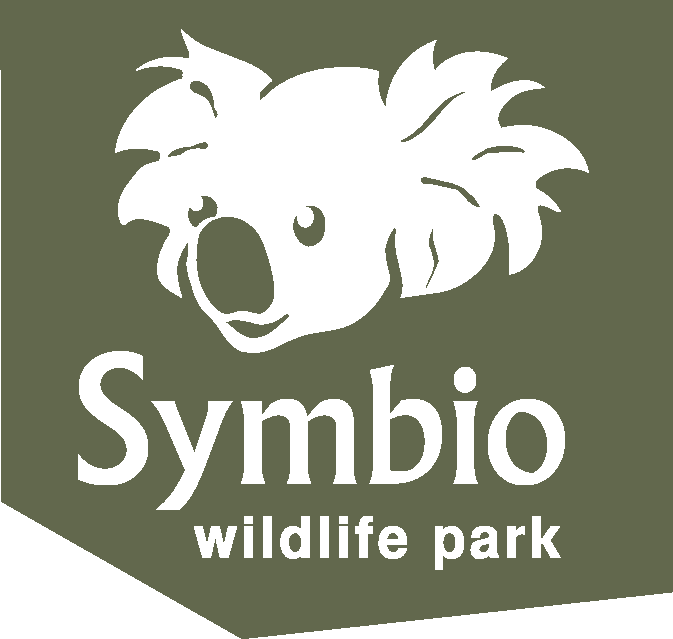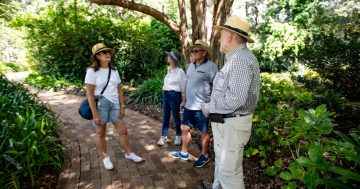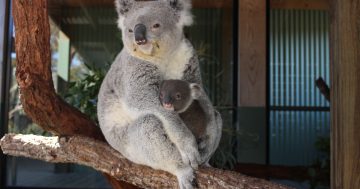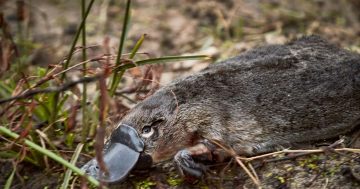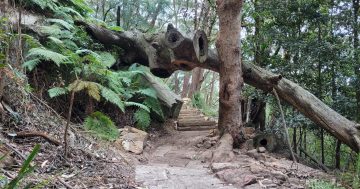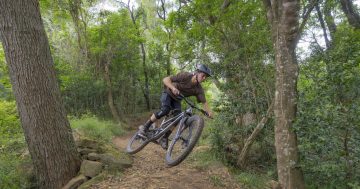
Thanks to research co-funded by Symbio Wildlife Park we know there’s a thriving koala population in and around the Illawarra escarpment. Photo: Symbio Wildlife Park.
A surprisingly large koala population has been discovered in the Illawarra, thanks to thermal imaging drones.
Researchers already knew the Illawarra escarpment and plateau were home to endangered koalas and southern greater gliders, but it turns out they’re not just a few scattered individuals.
A study published in Australian Mammalogy found 56 koalas and 127 greater gliders hiding out in more than 1000 hectares of rough terrain.
They’re not all hiding up the top, either.
Researchers found that although the populations of both species preferred to keep away from the urban fringe, they were spread across many deep forest sites throughout the surveyed area.
Lead author Jordyn Clough is a PhD candidate in UOW’s Environmental Futures research unit and said the findings show the escarpment forest is more important for conservation than previously thought.
The study has raised plenty of questions about the Illawarra koala population and how it fits into the big conservation picture.
“Until we performed these surveys we were going in blind, we didn’t have much data available,” he said.
“A lot of research and work has gone into monitoring koala populations around Appin and Camden for decades, and now we know we have a neat little population here.
“We don’t know if they are all one big population, or if there are barriers between the groups.
“It’s a double-edged sword – we could have one big population with a healthy gene pool and all the positives that go with it.
“At the same time if we have an infectious disease outbreak like chlamydia having some separation between the escarpment population and the northern population could be a positive.”
The research model, designed by wildlife and drone pioneer Dr Chad Beranek, was conducted over two years.
Night-time drones were flown over 47 carefully chosen sites in the region, using thermal imaging, spotlight verification, and 4K aerial video to detect and identify heat signatures of koalas and gliders hidden high in the canopy.
The tech made it possible to survey previously inaccessible landscapes for the first time.
Senior author Dr Katarina Mikac said the project demonstrated how thermal drone surveys and statistical modelling could shape future conservation decision-making.
“We can now monitor wildlife across vast, steep and otherwise inaccessible forest systems,” Dr Mikac said.
“This is the future of ecological research and a vital step in protecting Australia’s endangered species.”
Jordyn said the technology could also be used for direct conservation efforts in future, such as for identifying and treating sick animals.
Mean densities of 0.13 koalas per hectare and 0.17 gliders per hectare were estimated, providing valuable baseline data for the region.
The findings suggest both koalas and southern greater gliders persist at low but stable densities.
Jordyn said this news was particularly welcomed after the 2019-20 bushfires wiped out significant chunks of habitat further down the coast.
The Illawarra escarpment could represent a much-needed refuge for both species.
“It’s reassuring there are still these strong healthy populations of endangered species out there,” he said.
“Further down the coast greater glider and koala populations are often trapped in remnant forest patches devastated by logging and urban development, and there’s a lot we don’t know after the devastation of the bushfires.
“To have a population where it is really protected is very promising.”
His next hope is that the endangered greater gliders get some of that sweet, sweet koala PR.
“They are such an important species and they really are in need of help before it’s too late,” he said.
“People think of them like sugar gliders, but they’re the largest gliding marsupial, they’re the size of a small cat.
“We do all sorts of research and outreach on southern greater gliders, but it takes them being lumped in with koalas for a study for any sort of real traction.”
The project was co-funded by Symbio Wildlife Park and GM3 through the GM3 Community & Environmental Investment Program, and conducted under guidance and collaboration with Conservation Partners Pty Ltd, the research team from UOW, WaterNSW and the Department of Climate Change, Energy, the Environment and Water’s Saving our Species Greater Glider team.




